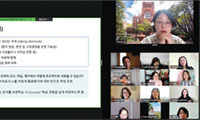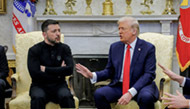It was only December when Dr. Ray Watts, the president of the University of Alabama at Birmingham, announced that after a strategic review, the school had decided to stop fielding a football team. The main reason for Watts’s decision was financial: two-thirds of the athletic department’s $30 million budget came from a combination of university funds and student fees. When a consultant concluded that the subsidy would have to more than double over the next five years for the football team to be competitive, Watts said, Enough. “We could not justify subsidizing football if it meant taking away from other priorities,” he told me at the time.
The university seemed to me then — and seems to me now — exactly the kind of school that should be rethinking football. It did not have a long football tradition — the team had been around for only 24 years. Its last winning season was in 2004. Its fan support was tepid; playing in a stadium with a capacity of 72,000, it averaged fewer than 20,000 fans a game until last year, when the number jumped to 21,800.
Besides, college sports, especially football, are getting more expensive. The major conferences are beginning to pay their athletes stipends that reflect the “full cost of attendance,” which can add $1 million or more in costs. There is the constant need to upgrade facilities to be able to recruit top-notch athletes. College coaches’ salaries are rising almost as fast as C.E.O. pay.
Schools in smaller conferences — Alabama-Birmingham is in Conference USA — have struggled to keep up, especially state schools whose budgets have been cut by their legislatures. (According to the Center on Budget and Policy Priorities, state spending per student in Alabama has declined over 36 percent since 2008.) USA Today does an annual ranking of university athletic department balance sheets, and you can clearly see this trend. Rutgers University had a $36 million deficit; the University of Connecticut, $27 million; the University of Massachusetts, $26 million; Eastern Michigan University, $25 million — and on the list goes.
Now fast forward to June 1 — when Watts did an about-face and announced that the university was not abandoning football after all. In the time between his first announcement in December and his second one last week, there was a huge outcry among the citizens of Birmingham. Despite the lack of fan support and the team’s tradition of losing, people reacted as if nothing were more important than getting their college football team back. There were calls for Watts to be fired.
When I asked Watts whether he had been taken aback by the outcry, he said he had been. A neurologist who was previously the dean of the university’s medical school — and now presides over a $3 billion institution — Watts was yet another college president who found himself spending ridiculous amounts of time dealing with sports.
But he really didn’t have much choice, given the passion the cancellation of football had aroused in the city. So, while continuing to insist that the university would not increase its subsidy beyond the current $20 million, Watts told the various interested parties that he would reinstate football (along with the bowling and rifle teams, which had also been cut) if they found a way to pay for it.
The university also commissioned a second study, which concluded that an additional $17.2 million would be needed over the next five years to field a competitive football team, plus $12 million to $14 million for a new practice facility.
There are those, like Andy Schwarz, a Bay Area economist who is an expert on the economics of college sports (and did his own study on the U.A.B. football decision), who say that the subsidy reported by most universities is wildly overstated, and that schools get numerous benefits for having a football team. But that is not the argument that anyone in Birmingham made. Instead, they accepted the idea that the football team had to be subsidized — and that they had to raise the money.
Which is what they did. By the end of May, the city’s corporate leaders had pledged to make up the additional $17.2 million subsidy, and had made a promising start on raising the $13 million or so needed for the practice facility.
When I asked Hatton Smith, the chief executive emeritus of Royal Cup Coffee and one of the fund-raising leaders, why it was so important to revive the football team, he essentially replied that it was a matter of civic pride. “In most major cities, there is some form of college football,” he said. “We think U.A.B. football adds to the quality of life in our community.” The way he described it, it was as if U.A.B. wouldn’t be a top-notch university anymore without a football team.
Thus does the cart come before the horse.
스마터리빙
more [ 건강]
[ 건강]이제 혈관 건강도 챙기자!
[현대해운]우리 눈에 보이지 않기 때문에 혈관 건강을 챙기는 것은 결코 쉽지 않은데요. 여러분은 혈관 건강을 유지하기 위해 어떤 노력을 하시나요?
 [ 건강]
[ 건강]내 몸이 건강해지는 과일궁합
 [ 라이프]
[ 라이프]벌레야 물럿거라! 천연 해충제 만들기
 [ 건강]
[ 건강]혈압 낮추는데 좋은 식품
[현대해운]혈관 건강은 주로 노화가 진행되면서 지켜야 할 문제라고 인식되어 왔습니다. 최근 생활 패턴과 식생활의 변화로 혈관의 노화 진행이 빨라지고
사람·사람들
more많이 본 기사
- 남가주 전역에 ‘물폭탄’… 성탄 연휴 ‘대혼란’
- [2025년 한 해 ‘진 별’들] 미주 한인사회 원로들 ‘역사의 뒤안길’로
- 체포 불체자 수만명 물류창고에 수감 추진
- 크리스마스 연휴 음주운전 ‘꼼짝마’
- 우크라이나도 “Merry Christmas!”… 지구촌 성탄 축하
- 트럼프 ‘전쟁할 결심’?… 미군 특수부대 카리브해 이동
- 여성 살해·자녀 납치 한인 ‘수배’
- 한인타운 한복판 주유소서 강도 ‘칼부림’
- “소변 불편한데 주저하다 방광 망가져”
- H-1B ‘10만 달러 수수료’ 연방법원, 이의소송 기각
- 새해 더 건강해지기 위한 의사의 과학적 조언 10가지
- “대학 학자금 상환 안하면 임금 압류한다”
- 선우용여 “아들, 돈 없어 개밥 먹기도..아파트 마련해줬다”
- ‘라스베가스에서 만난 한인들’
- 난방기 뜯자 ‘비밀공간’ 은신 마피아 보스 체포
- 한인들 위한 무료 법률 상담회 개최
- 뚜레쥬르, 뉴욕시 맨해튼 매장 오픈
- CBS가 보류한 ‘불법체류자 추방’ 보도, 캐나다서 원본 유출
- 바야흐로 ‘귀금속 시대’… 금·은·구리까지 사상 최고
- 원·달러 환율, 당국 개입에 42원 폭락
- [성탄절 앞둔 우울한 경제상황] ‘내 코가 석자’… 기부 급감
- 샌프란시스코, 한국 방문해 이정후와 함께 야구 클리닉
- 미·중 무역전쟁 휴전 지속… 반도체 관세도 보류
- 여성 살해·자녀 납치 한인 ‘수배’
- 테슬라, “비상사태 시 차문 안 열려”
- 피클볼이 바꾸는 부동산의 얼굴
- 북가주 한인 독립운동가 ‘이대위의 날’ 제정 추진
- 쿡, 나이키 주식 매입 2005년부터 사외이사
- [전문의 칼럼] 과호흡증후군
- 최준희, 엄마 故최진실 생일 맞아 추억 “우리 마미 축하”
- 한국외대·연세대·한양대 GCEO 연합골프대회 성황
- [스티브 강 ‘인사이드 미국’] 2026 중간선거: 트럼프 지지율 하락이 말해주는 것
- [만화경] 해수부 부산시대
- [윌셔에서] 우리 안의 ‘생각하는 사람’을 깨울 시간
- 최강팀 OKC 천적으로 떠오른 샌안토니오… 4패 중 2패 안겨
- 2026년 ‘올해의 컬러’ 전격 공개… 팬톤의 파격적 선택도 포함
- 서태지, 딸·엘리와 1년 만에 근황 “좋은 소식 없어 안타까워”
- LA 마약조직 집중 단속 갱단원 등 수백명 체포
- [성탄절 앞둔 우울한 경제상황] 연말 선물로 중고품 급증
- [유혜미 칼럼] 치솟는 환율, 경제 지표의 역설
- 다운타운 LA 라이브에 등장한 아이스링크
- 북한인, 아마존 위장취업 대거 적발
- 글로벌미션 체임버오케스트라 자선 공연
- 오헌, 샌디에고 떠나 피츠버그와 입단 합의… 송성문에겐 기회
- [팜스 카지노 리조트] “새해 맞이는 팜스에서… 푸짐한 행사들과 특별요리”
- 중산층이 집을 사지 않는다?… 챗GPT가 내다본 주택시장 미래
- [기고] 안정의 기준은 어떻게 제도가 되었나
- 팔레스타인서 구금된 한인 여성 무사 귀환
- 가주태권도협 이취임식
- 미 조선업 부활 위한 한·미 ‘마스가’ 프로젝트 본격
1/5지식톡

-
 미 육군 사관학교 West Poin…
0
미 육군 사관학교 West Poin…
0https://youtu.be/SxD8cEhNV6Q연락처:wpkapca@gmail.comJohn Choi: 714-716-6414West Point 합격증을 받으셨나요?미 육군사관학교 West Point 학부모 모…
-
 ☝️해외에서도 가능한 한국어 선생님…
0
☝️해외에서도 가능한 한국어 선생님…
0이 영상 하나면 충분합니다!♥️상담신청문의♥️☝️ 문의 폭주로 '선착순 상담'만 진행합니다.☎️ : 02-6213-9094✨카카오톡ID : @GOODEDU77 (@골뱅이 꼭 붙여주셔야합니다…
-
 테슬라 자동차 시트커버 장착
0
테슬라 자동차 시트커버 장착
0테슬라 시트커버, 사놓고 아직 못 씌우셨죠?장착이 생각보다 쉽지 않습니다.20년 경력 전문가에게 맡기세요 — 깔끔하고 딱 맞게 장착해드립니다!장착비용:앞좌석: $40뒷좌석: $60앞·뒷좌석 …
-
 식당용 부탄가스
0
식당용 부탄가스
0식당용 부탄가스 홀세일 합니다 로스앤젤레스 다운타운 픽업 가능 안녕 하세요?강아지 & 고양이 모든 애완동물 / 반려동물 식품 & 모든 애완동물/반려동물 관련 제품들 전문적으로 홀세일/취급하는 회사 입니다 100% …
-
 ACSL 국제 컴퓨터 과학 대회, …
0
ACSL 국제 컴퓨터 과학 대회, …
0웹사이트 : www.eduspot.co.kr 카카오톡 상담하기 : https://pf.kakao.com/_BEQWxb블로그 : https://blog.naver.com/eduspotmain안녕하세요, 에듀스팟입니다…
케이타운 1번가
오피니언
 스티브 강 전 한인민주당협회 회장
스티브 강 전 한인민주당협회 회장 [스티브 강 ‘인사이드 미국’] 2026 중간선거: 트럼프 지지율 하락이 말해주는 것
 김홍일 케이유니콘인베스트먼트 대표
김홍일 케이유니콘인베스트먼트 대표 [기고] 안정의 기준은 어떻게 제도가 되었나
 유혜미 한양대 경제금융대학 교수
유혜미 한양대 경제금융대학 교수 [유혜미 칼럼] 치솟는 환율, 경제 지표의 역설
 성민희 소설·수필가
성민희 소설·수필가 [윌셔에서] 우리 안의 ‘생각하는 사람’을 깨울 시간
 김정곤 / 서울경제 논설위원
김정곤 / 서울경제 논설위원 [만화경] 해수부 부산시대

[왈가 왈부] 내란재판부·정통망법 또 수정… 졸속·땜질 아닌가요
 정숙희 논설위원
정숙희 논설위원온라인쇼핑과 반품, 그리고 그 이후
 파리드 자카리아 / 워싱턴포스트 칼럼니스트 / CNN ‘GPS’ 호스트
파리드 자카리아 / 워싱턴포스트 칼럼니스트 / CNN ‘GPS’ 호스트 트럼프의 새 독트린 “미국을 다시 왜소하게”
 김동찬 시민참여센터 대표
김동찬 시민참여센터 대표 [미국은 지금] MAGA의 분열, 예견된 균열의 시작
1/3지사별 뉴스

“온 세상에 평화를⋯”
숨가쁘게 달려온 2025년을 이제 1주일 남짓 남긴 채 크리스마스 이브를 맞는다. 다사다난했던 한 해를 되돌아보며 마무리하는 연말 시즌과 크리…
H-1B비자 고임금·경력자에 우선권

‘올해는 ICE 이민자 체포 광풍의 해’
올 한해동안 버지니아와 메릴랜드, DC 등에서 연방 이민당국에 체포된 사람이 1만명이 훌쩍 넘는 것으로 조사됐다. 또 미 전국적으로는 22만명…
“ATM기 사용하기 겁나네”

한인들 위한 무료 법률 상담회 개최
샌프란시스코 베이지역 한인회(회장 김한일)는 지난 20일 한인회관에서 북가주 지역 한인들을 위한 무료 법률 상담회를 개최했다. 이날 행사에는 …
여성 살해·자녀 납치 한인 ‘수배’

오늘 하루 이 창 열지 않음 닫기 





















































.png)


댓글 안에 당신의 성숙함도 담아 주세요.
'오늘의 한마디'는 기사에 대하여 자신의 생각을 말하고 남의 생각을 들으며 서로 다양한 의견을 나누는 공간입니다. 그러나 간혹 불건전한 내용을 올리시는 분들이 계셔서 건전한 인터넷문화 정착을 위해 아래와 같은 운영원칙을 적용합니다.
자체 모니터링을 통해 아래에 해당하는 내용이 포함된 댓글이 발견되면 예고없이 삭제 조치를 하겠습니다.
불건전한 댓글을 올리거나, 이름에 비속어 및 상대방의 불쾌감을 주는 단어를 사용, 유명인 또는 특정 일반인을 사칭하는 경우 이용에 대한 차단 제재를 받을 수 있습니다. 차단될 경우, 일주일간 댓글을 달수 없게 됩니다.
명예훼손, 개인정보 유출, 욕설 등 법률에 위반되는 댓글은 관계 법령에 의거 민형사상 처벌을 받을 수 있으니 이용에 주의를 부탁드립니다.
Close
x